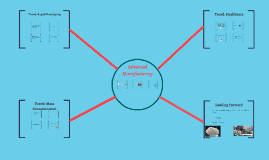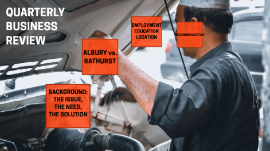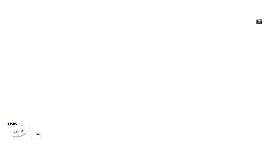Advanced Manufacturing
Transcript: Used Equipment Cost: New Machinery for all types of manufacturing process are available with computer controlled accuracy allowing parts to be cut with precision, safety and profit in mind. Older equipment has the tendency to no longer be cost effective to maintain. This not only includes any changes in the original features of the equipment but also externally imposed changes such as those required by new governmental legislation. Customers often require stringent tolerances to ensure products are safe and meet operating standards. When product does not meet standards it gets rejected or worse could possibly hurt or kill someone; which can mean lawsuits. The final reason for replacing equipment is that it can’t meet production requirements. Every organization in the world is looking for ways to reduce manufacturing costs while at the same time increasing production. When the equipment can’t meet production requirements in terms if either throughput or manufacturing cost it should be replaced. Used equipment has the tendency to be over looked for the simple fact that its name implies worn out or damaged. Used equipment can have tolerances equal to new equipment and cost less to operate than previous owned equipment it is to be replacing. Reliable parts is something that further analysis and studies will need to be designed around, parts for certain industries (such as aerospace) can only be made by high end equipment which will cost much more than second hand equipment and upgrades can cover. New Equipment Vs. Old Equipment Summery Used equipment can often times be just as good as new equipment for cheaper. Companies that can't afford lease payments or are having financial troubles often have to give up their equipment. This allows companies with enough financial means to purchase equipment that would otherwise be unavailable or out of reach. The term reliability is no longer just a “buzz word” in the manufacturing sector but a way of life. The strategy of replacing old equipment with more reliable equipment is certainly within the realm of our new reliability life style provided it is well thought out and makes financial sense. The down side is that not all used equipment is treated kindly by its previous owners, this presents a problem to manufacturing as to how well tolerances and specifications can be held. Lightly used equipment can in some cases be just as good as brand new saving a large amount of capital for less. In other cases used equipment is a gamble better not to have taken. In today’s modern world full of technology certain areas of manufacturing has continued to do things using older but proven equipment. Advanced Manufacturing Inc. is a company that tests, installs and provides customers with high tech, high quality manufacturing solutions to everyday problems. As a recent example one of our clients wanted to compare their current manufacturing capabilities to new state of the art manufacturing equipment and what the pros and cons are to each of the decisions. We will go over the cost of upgrades both new and used equipment and the savings that are likely to take place due to such upgrades. Scrap metal is one of the company’s top concerns, reducing scrap and rework is to be a top priority. The results of our analysis will give our customer knowledge and data on which to make a decision. This decision will not be made lightly due to the impact of changing global environments and the cost of retraining people. The resources required to implement these changes will be taken into consideration during the analysis. New Equipment Cost: End Results: Cost analysis for a time period of 20 years requires understanding of Present Worth, Future Worth and Annual Worth analysis. A value for minimum attractive rate of return (MARR) needs to be calculated before any actual analysis of equipment starts. Methods Used: Based on analysis the New Equipment is the best option in terms overall costs and annual maintenance costs. Please see attached Excel Spread sheet for further break down and details. Cost analysis for a time period of 20 years was conducted for used equipment. Replacement would be every 5 years with first phase cost = $975,000. Ten Machines are planned for each phase with a total of 4 phases. Annual operating costs = $2,000. No scrap is estimated due to the equipment being used already. Quality, Reliability and Repeatability: Advanced Manufacturing Inc. By Jonathan Kluge New machinery often is more expensive by a large margin than used machinery however the added payout and benefits often outweigh the risks of such an investment. New equipment will be much more efficient and reduce errors other older machines will produce, reliable parts means reliable production which in turn means you can guarantee customers will come back for repeat business. Cost Effective Measures: New Equipment: Cost analysis for a time period of 20 years was conducted for new equipment. Replacement would be in phases to

















